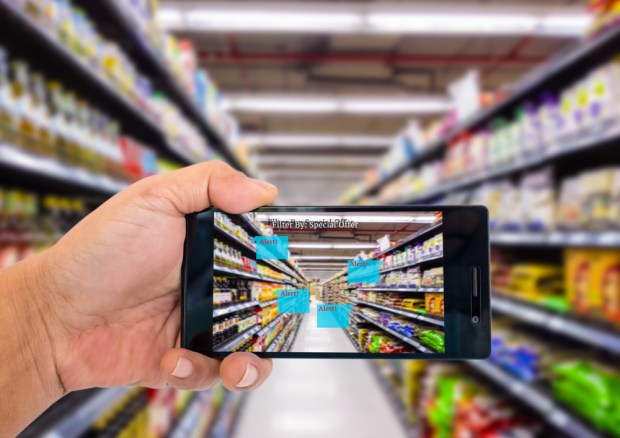The Future Of Augmented Reality Is Becoming Clearer

Recent moves from PayPal and Target have brought fresh attention to the use of augmented reality (AR) to boost commerce and payments. The technology remains in its infant stage — with seemingly as many ideas and demonstrations as real-world applications — but the paths to an augmented reality future are becoming clearer.
The revival this spring of PayPal’s patent for payment-enabled augmented reality glasses has some analysts wondering how close the technology is moving toward the mainstream. The software described in the patent would give consumers with the glasses access to product and purchasing data simply by looking at an item on a store shelf. Consumers could store their payment information with the PayPal system and buy items from vendors.
There exists no indication that PayPal intends to introduce those glasses anytime soon, but the market for augmented reality in retail is coming together, according to some analyst reports. For instance, Goldman Sachs has estimated that augmented reality will drive $1.6 billion of retail annually by 2015, fueled by the shopping habits of some 32 million consumers.
Not all augmented reality projects in the coming months or years will have a direct link to payments — at least not immediately — but they could help to train shoppers to use a form of shopping that further brings together the digital and physical worlds.
A move from Target might fit into that category. The retail chain, working with Perfect Corp.’s YouCam Makeup app, this month announced the development of its Target Beauty Studio. The chain will enable customers — in at least 10 stores for now — to use the app to virtually try on different makeup products via a digital screen. Target will still employ human beauty experts inside its stores.
The potential promise of augmented reality has also gained the attention of Mastercard, which has used Masterpass, mobile technology and iris recognition to create a “shopping experience” that relies on “photorealistic augmented reality and provides consumers the ultimate customized, security-focused shopping experience.”
Augmented reality could also support more traditional payments and financial tasks. “The National Bank of Oman has created a nationwide method whereby users can locate their nearest bank branch or ATM using augmented reality, which, in fact, goes some way in negating the view of bank branches as defunct,” wrote Elliot Burr of Kurtosys in a blog operated by the financial services and technology firm.
The future of augmented reality in tasks related to commerce and payments will involve voice assistant technologies, according to a recent Juniper report. Those systems will “become the primary method of controlling head-mounted AR devices,” the research firm said in an overview of the augmented reality landscape. “Indeed, Vuzix (an augmented reality services provider) has already integrated Amazon’s Alexa into its development platform. Commands through voice assistants will require insignificant amounts of data — however, including the required hardware may remain an issue.”
Juniper also anticipates that mobile apps will represent a lucrative area for augmented reality in the near future, with “mobile AR games representing 44.9 percent of all installed mobile applications” by 2022. The “primary value of the AR games market will come from (pay-per-download monetization) and in-app purchases, with little variation across the regions.”
The near term for augmented reality might also bring as many, or more, indirect commerce and payment links as direct ones.
“Search will be the most popular category of mobile AR apps in the short and medium term,” Juniper said. “Furthermore, AR allows major brands to geotag any physical objects, ranging from their high street stores to physical advertising such as billboards. Thus, a consumer could view a passer-by wearing geotagged clothing, read information about the brand through the camera viewfinder, click through onto that brand’s website and purchase that same item.”
Augmented reality has a ways to go before it becomes a daily part of consumer life. But as recent news has shown, the interest of large players in the payments and retail industries cannot be ignored.
